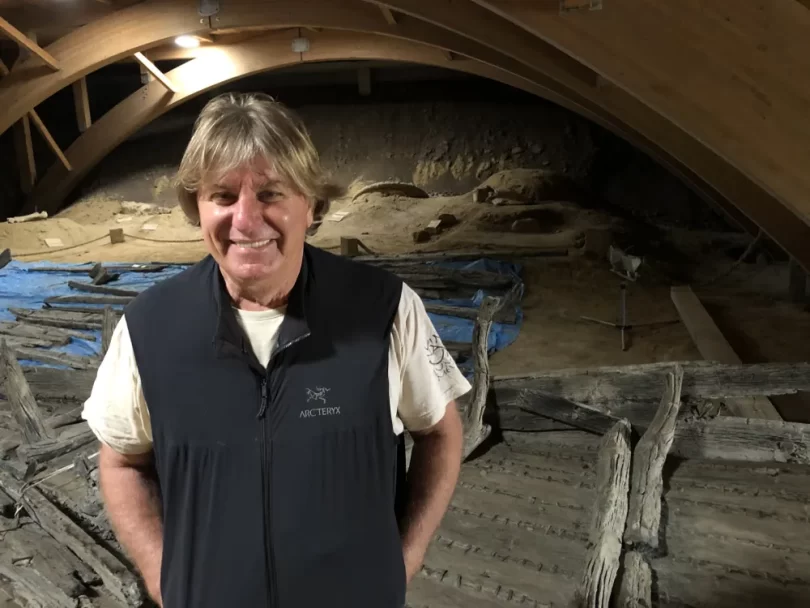In Serbia, archaeologists are carefully removing sand and soil from the well-preserved wooden remains of a Roman ship. The ship was found by miners in a large coal quarry.
Following the exposure of timber by an excavator at the Drmno mine, specialists from the nearby historical Roman site called Viminacium quickly rushed to protect and conserve the ship’s structure. This marks the second such finding in the region since 2020.
Experts think the ship is a part of a river fleet. This fleet served a large Roman urban center. The center housed about 45,000 inhabitants. The city had many features. These included a hippodrome and defensive structures. It also had a forum, a palace, temples, and an amphitheater. Aqueducts, baths, and workshops were also present.
Lead archaeologist Miomir Korac suggests earlier findings indicate the ship might be from the 3rd or 4th century AD. During this timeframe, Viminacium was the capital of the Roman province of Moesia Superior. It also had a port near a Danube River tributary.
Korac clarified the process: first, the wood was dampened with water. Then, it was covered with a tarpaulin to protect it from summer heat, which could cause deterioration.
Mladen Jovicic, who is part of the team working on the newly-discovered ship, said moving its 13-metre hull without breaking it would be tough.
The excavations at Viminacium commenced in 1882. However, experts believe that only a mere 5% of the expansive 450-hectare site, which is larger than New York’s Central Park, has been thoroughly explored. Notably, this site stands out as it is not concealed beneath a contemporary modern city.
Discoveries so far include golden tiles, jade sculptures, mosaics and frescos, weapons, and remains of three mammoths.
Significant Roman Archaeological Sites
Pompeii and Herculaneum, Italy:
The eruption of Mount Vesuvius in 79 AD famously preserved these cities. The ruins provide remarkable insights into daily life during the Roman Empire.
Also read: High Speed Train from Rome to Pompeii
Ephesus, Turkey: Once a prominent port city, Ephesus boasts well-preserved structures like the Library of Celsus, the Great Theatre, and the Temple of Artemis.
Colosseum, Rome, Italy: The iconic amphitheater is a symbol of ancient Rome. Gladiator contests and public spectacles happened there. It’s a lasting reminder of that era.
Jerash, Jordan: Jerash, known as Gerasa in Roman times, boasts impressive colonnaded streets, theaters, temples, and other structures. These showcase the strong influence of Roman architecture.
Timgad, Algeria: Emperor Trajan founded Timgad, preserving its grid layout and Roman architecture effectively. They provide insights into urban planning of that period.
(eTN): Excavations Uncover Roman Archaeological Mysteries | re-post license | post content























